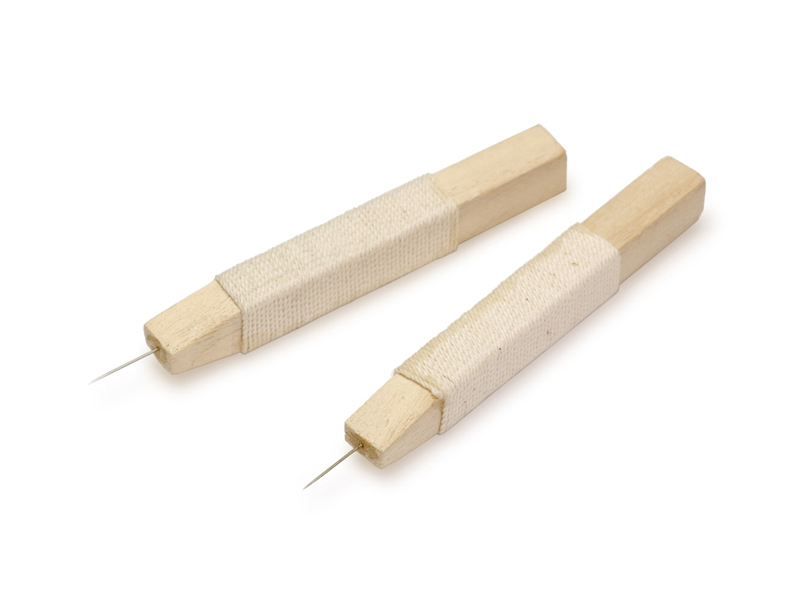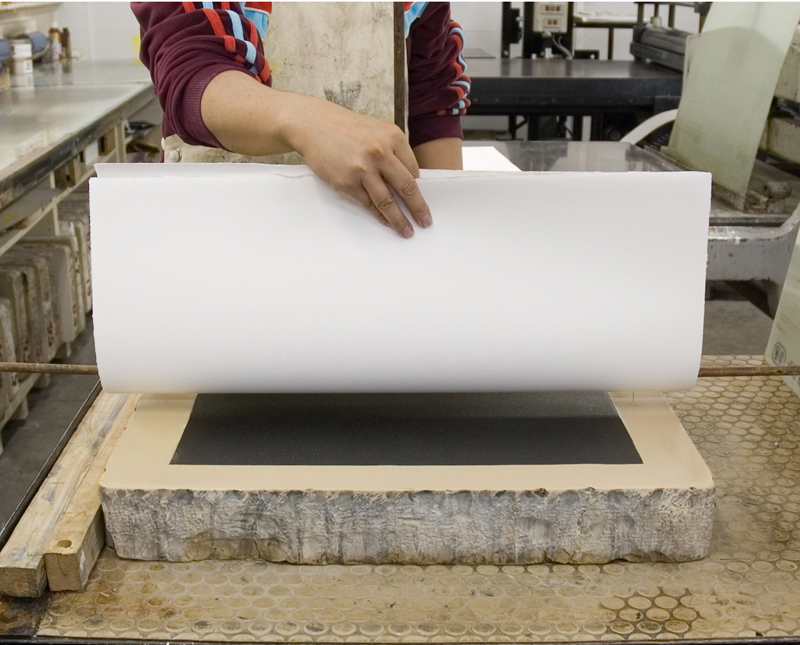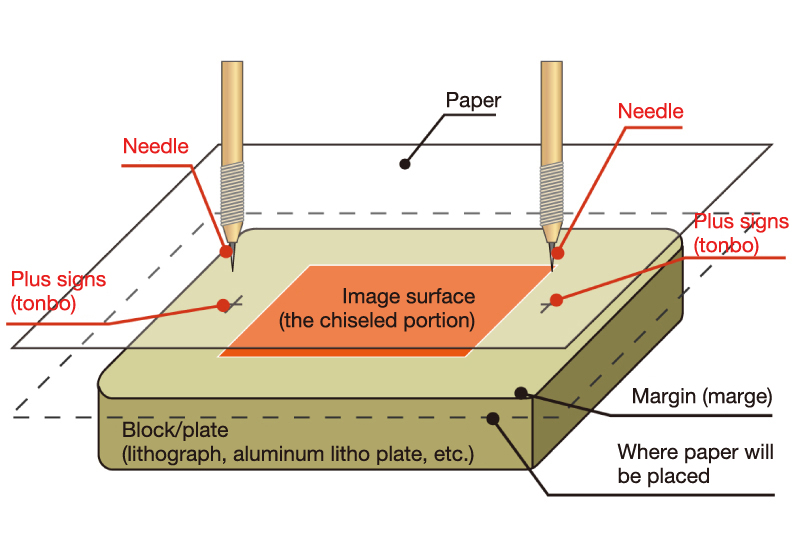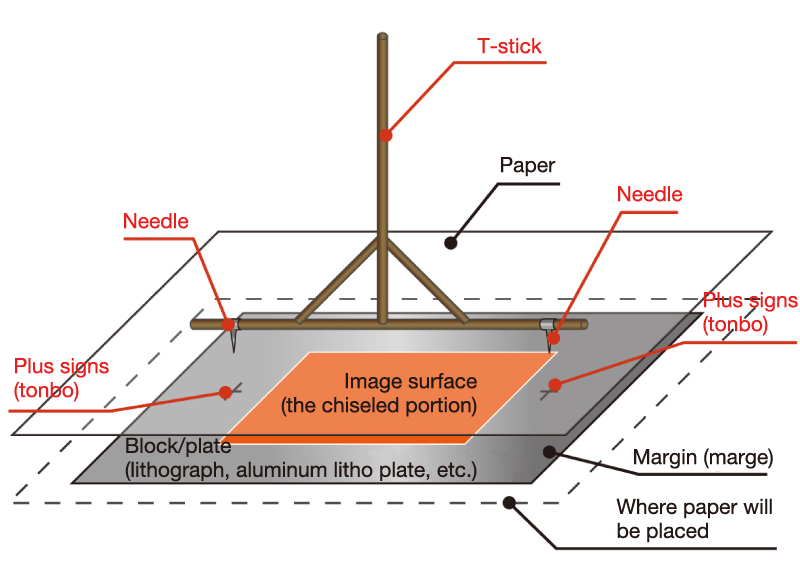Hari Kento
針見当
Harikentou
CATEGORIES
Hari kento is a registration method used in lithography and multi-color copperplate printing to place the printing paper in the correct position against the plate using needles.
This technique is employed in normal printing, and also when the paper is larger than the plate or comes in various sizes. When used for multi-color lithography, plus signs (tonbo) must first be inscribed in the margin section of the first plate. These are placed in two locations at the center of either the top and bottom margins, or the left and right margins. In subsequent plates, holes are made in the same positions as the center of the plus signs on the first plate. This is where the needles will be inserted. With the hari kento method, the picture and the plus signs are printed out together using the first plate. From the second plate onwards, needles are threaded from the back of the paper through the center of the plus signs printed with the first plate, and then aligned with the holes machined into the plate surface. The paper is thus placed in the correct position. A T-shaped instrument with movable needles can be used for this process.
When using hari kento in copperplate printing, all the plates are prepared in advance with two holes where they are least noticeable. Then, in the same way as lithography, the paper is pierced with needles to position it correctly.

 Needle
Needle- Using a needle for a hari kento

- Using a T-stick for a hari kento


- Hari kento (block/plate, surface, tonbo, needle, and paper diagram)


